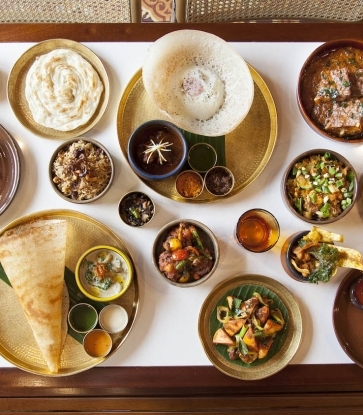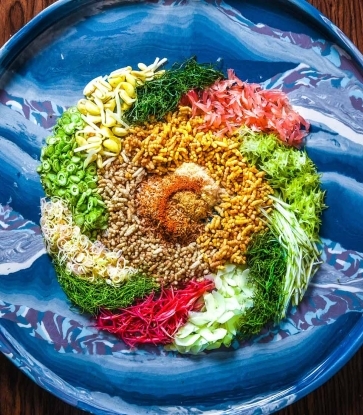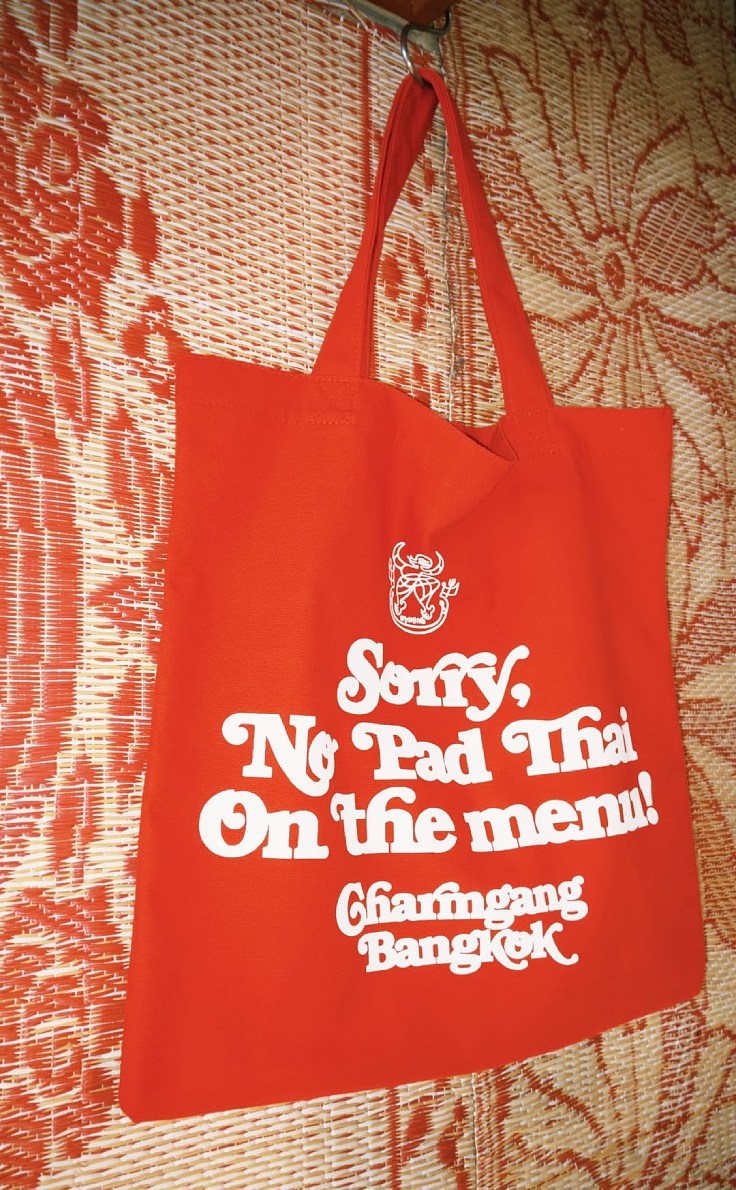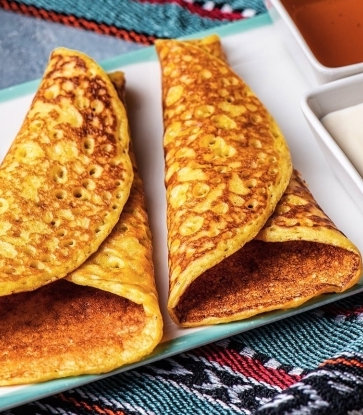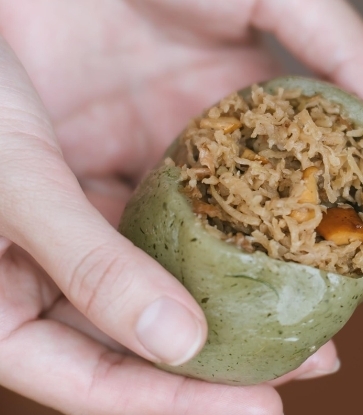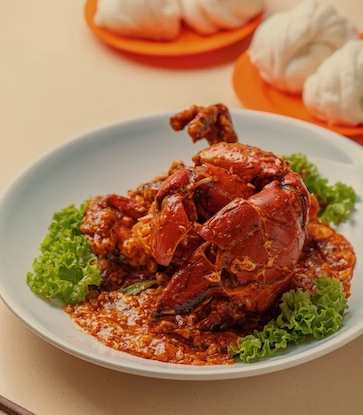With a wide range of styles, flavors and price points, Taiwanese beef noodles offer something for every palate and budget, making it a must-try dish for anyone visiting Taiwan.
The dish’s origins, however, are widely debated. In the early days, Taiwan was predominantly an agricultural society where rice was the staple food, and cattle were mainly used for farming, meaning that eating beef was uncommon. Beef noodles only became widespread after 1949, when a large number of soldiers and their families from China relocated to Taiwan. Additionally, in 1951, the United States provided military aid along with essential goods such as flour and canned food, which led to the rise of wheat-based dishes and a growing acceptance of beef consumption, spreading from military communities to the general public.
RELATED: Iconic Dishes: 7 Must-Try Noodles That Deliver a Taste of Taiwan in Every Bowl

A Dish of the People: A Fusion of Flavors
The charm of beef noodles lies in its bold contrast of flavors and textures. The dish features a deep and refined broth, springy noodles and various cuts of beef, each with its own texture. While these elements may seem distinct, they work harmoniously together — just like Taiwan’s diverse and evolving cultural landscape.
Today, beef noodle varieties are generally divided into two main types: qingdun (clear broth) and hongshao (braised broth). From these, different methods of preparing the broth, noodle types and beef cuts have further evolved.

The Best Beef Cuts for Tenderness and Taste
For connoisseurs, the choice of beef cut is an essential measure of a restaurant’s expertise. Some parts, such as offal, which many foreigners might find daunting, require slow braising to achieve the right texture — liver becomes tender, tripe turns chewy and tendons develop a silky smoothness. Since different restaurants use varying combinations of offal, a bowl containing multiple cuts is often called za (mixed), offering a rich and varied tasting experience while reflecting the traditional Taiwanese value of minimizing waste. (Right image©Tien Hsia San Chueh)
RELATED: From Oo-peh-tshiat to Offal Delicacies: A Culinary Exploration from Hooves to Beaks in Taiwan
The most common option, banjin banrou (half tendon, half meat), typically consists of beef shank, brisket or shoulder, combined with gelatinous tendons for a perfectly balanced bite — tender yet firm. High-quality restaurants take great care in preparation, first blanching the beef to remove impurities before stir-frying it with ingredients such as spring onions, ginger, star anise or doubanjiang (fermented chili bean paste) to build complex layers of flavor. A well-prepared bowl of beef noodles offers both variety in texture and a visually satisfying presentation.
Historically, Taiwanese beef noodles were made with local yellow cattle, but as these became scarce and expensive, dairy cattle and imported beef were increasingly used. Some restaurants have even begun incorporating wagyu beef, demonstrating how the dish has continuously evolved with time.
RELATED: An Antidote to Homesickness: André Chiang and His Beef Noodle Soup

The Broth: The Soul of Beef Noodles
If beef is the star of the dish, then the broth is undoubtedly its soul. The qingdun (clear broth) variety is said to have originated from Lanzhou-style hand-pulled noodles. Some of the Hui Muslim soldiers who relocated to Taiwan brought their halal culinary traditions with them, and Lanzhou’s famous Jincheng (former name of Lanzhou) beef noodles took root in Taiwan, becoming the foundation of qingdun beef noodles.
Despite its light appearance, qingdun broth is prized for its pure and unadulterated umami. Typically, it is made by simmering large quantities of beef bones, offal and vegetables over a low heat to extract their essence. When served, the broth has a rich aroma, providing a delicate yet deeply satisfying complement to the noodles and beef.
Compared to the subtle elegance of qingdun, hongshao (braised broth) is bold and robust, packed with layers of intense flavor. It also begins with a beef bone base, but the broth is enhanced with aromatic spices such as five-spice powder, star anise, bay leaves, doubanjiang (fermented chili bean paste), and chili oil. The beef and vegetables are stir-fried with soy sauce before being slowly braised in stock, resulting in a broth that is deeply savory with a hint of spice. Since there is a wide range of ingredients used in hongshao broth, each restaurant has its own secret recipe, making every bowl unique in taste, appearance and garnishes.
RELATED: How To Tell Taiwanese Ta-a And Tshik-a Noodles Apart
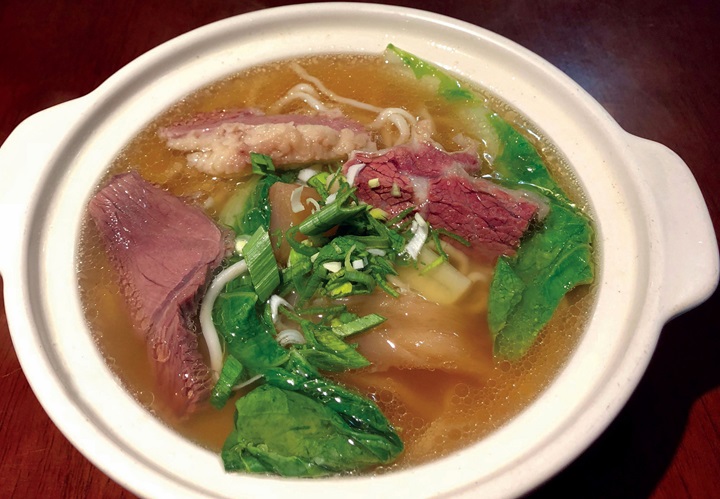
Noodles: Wide for Soaking Up Soup, Thin for a Light Taste
Noodle preferences vary from person to person, with choices evolving beyond the traditional wide noodles of mainland China to include sliced noodles, yangchun (plain noodles), hand-pulled noodles and fine noodles. In general, wider and knife-cut noodles are favored for their ability to absorb broth while providing a chewy texture, making them a staple in many beef noodle restaurants. However, fine noodles, which absorb less broth, have also gained popularity among those who prefer a lighter taste.
Many restaurants also offer condiments such as pickled mustard greens and homemade chili oil. After tasting the original flavor of the broth, diners are encouraged to add these toppings like a local — pickled mustard greens bringing a crisp, tangy and salty contrast, helping to cut through the richness of the broth, while chili oil enhances the spiciness, elevating the dish to another level. This custom reflects the warm hospitality of the Taiwanese people, who often encourage guests to “eat a little more” making beef noodles not just a meal, but a deeply cultural and emotional experience.

Where to Find Taiwanese Beef Noodles?
Halal Chinese Beef Noodles (Da'an)
The owner insists on using only Taiwanese beef from Kinmen. The beef stock is simmered all day to develop deep flavors, without any greasiness, to perfectly match the fine noodles.Ke Kou Beef Noodles
The signature noodle soup with red braised beef and sinew boasts a complex and rich broth — simmered for hours with more than 30 Chinese herbs — that perfectly complements the springy noodles and tender Australian beef shin.
Muji Beef Noodles
This restaurant is famous for its flavorsome broth, which is made with beef bones and meat, Chinese herbs, scallion, garlic and a secret fruit that lends a subtle sweetness. The signature beef noodle soup uses only local beef for its unrivalled meaty flavor that pairs perfectly with the springy wide noodles.
Hero image: ©Shutterstock
The article is written by Karen Lin and translated by Chia Wen Hsu. Read the original article here.
Further Reading: Taiwan's Must-Eat Beef Noodle Bowls



